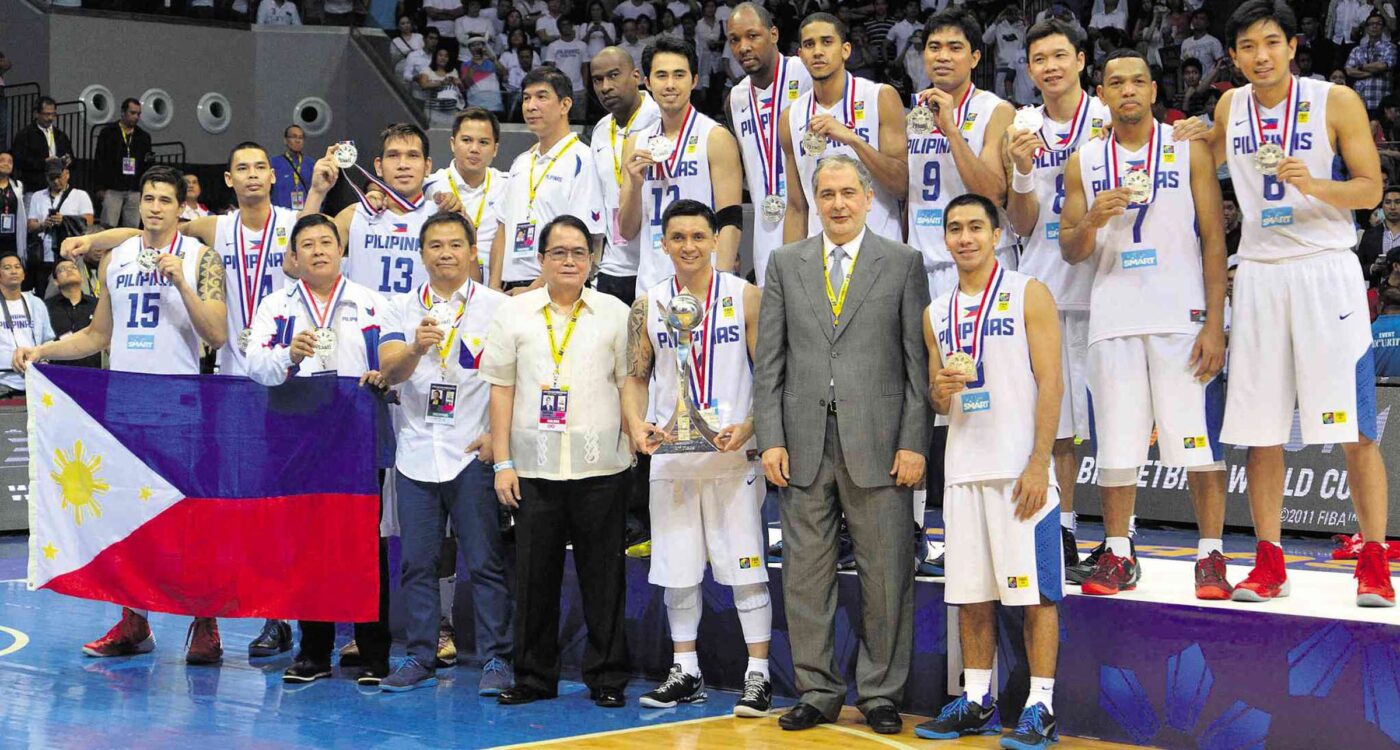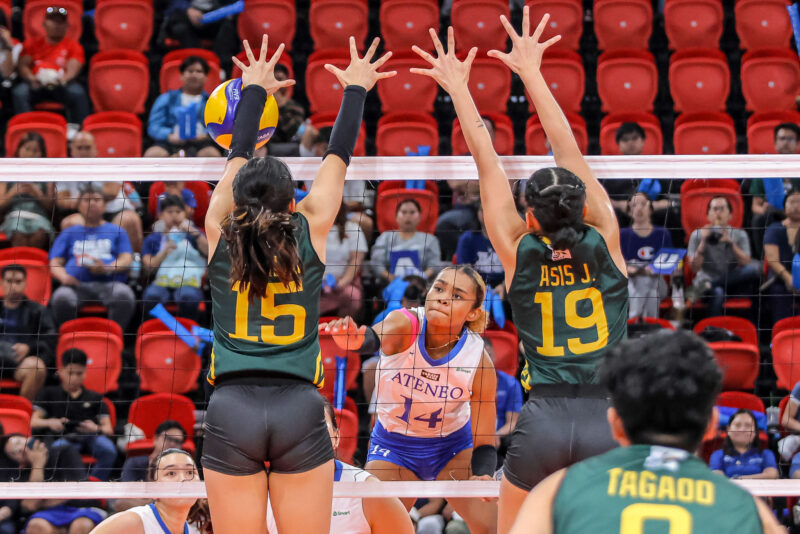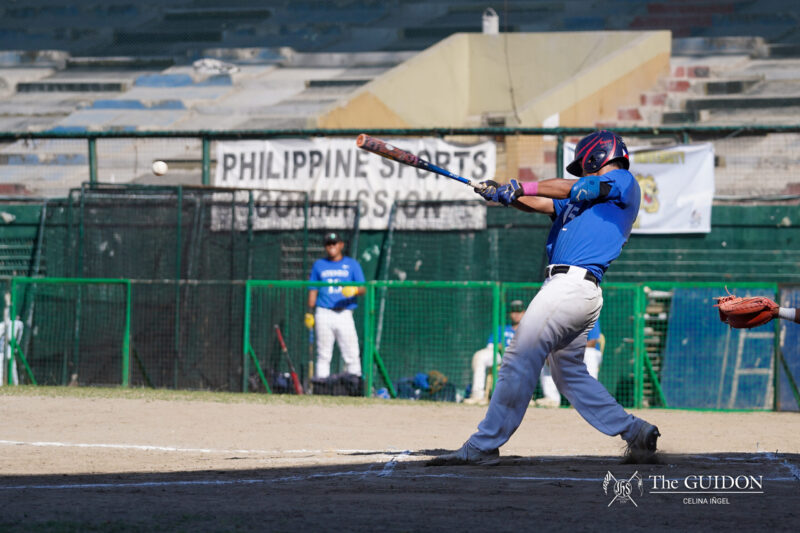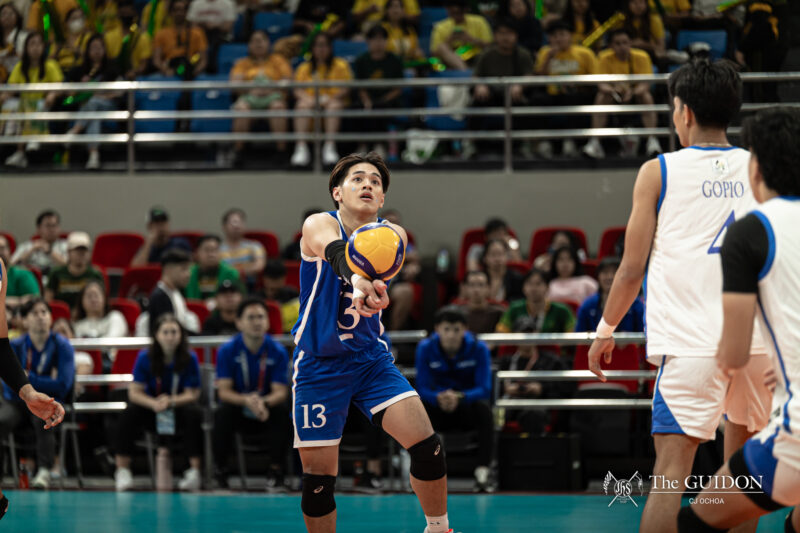Athletes ideally unify the nation when they participate in international competitions. There are many expenses—such as those for training, equipment, and traveling—that teams incur in order to represent the country on an international level. As such, there is a need for these athletes to be funded.
National athletes are backed by both the public and private sectors. However, there seems to be a huge disparity between these two sources of funding. The private sector, whose support is only voluntary, seems to be helping national athletes—such as Smart Gilas, the Philippine Azkals, and Olympic skater Michael Martinez—more than the public sector, who, in theory, should be assuming responsibility for what are national affairs.
Private sector support
It is no secret that the private sector funds the Philippine National Basketball team. Gilas Pilipinas is backed by the Samahang Basketbol ng Pilipinas, with its president, Manuel V. Pangilinan, at the helm.
“We’d like to think that it’s the most organized way to financially support the national team. The private sector is driven by their passion for the sport they love,” says Melmac Sports Management Head Mel Macasaquit, who works closely with the Smart Gilas Program as well as with the Philippine National Football Team, the Azkals.
“While it is traditionally the obligation of the government to fund and organize the team, the corruption involved will just be an add-on to the burden of the team management and players. Gilas is a better team because of [Manuel V. Pangilinan],” he adds.
He also commented that the funding the government gives to its national athletes is “very limited.” According to a 2015 article from GMA News, data from 2011 revealed that Thailand and Singapore allocated the equivalent of Php 14.37 billion and Php 7.2 B for sports programs, respectively. The Philippines, on the other hand, allocated only Php 962 million in the same year.
Macasaquit says that the government can help “by simply understanding the needs of each athlete representing the flag.” He also points out that there must be a focus on grassroots, citing the case of home-grown Filipino football player Chieffy Caligdong, whose “training in Barotac Nuevo before joining the national team was Stone Age compared to what [international football player Lionel] Messi had.”
This is the case as many Azkals, such as Neil Etheridge and Phil Younghusband, were trained overseas. Other players such as Stephan Schrock and Simone Rota were scouted playing abroad and brought back to play for the national team—this was also a private sector effort.
In an interview with BusinessWorld in 2014, Edwin Gastanes, general secretary of the Philippine Football Federation, said that “football gets support from the government only insofar as the facilities are concerned, [there is] very little cash. It is really private sector-driven.”
Gintong Alay
There was a time, however, when the public sector supported national athletics well and yielded good results in international competition.
On October 31, 1979, then President Ferdinand Marcos released the Letter of Instructions No. 955 through which Project Gintong Alay (“Golden Offering”) was created. All programs for the development of Track and Field were under this project. Project Gintong Alay was Marcos’s brainchild to increase the development of Philippine sports and competitiveness internationally.
On November 11, 1980, Presidential Decree 1742 allowed Gintong Alay to import sports equipment and granted exemption from taxes.
The Project Gintong Alay training facility was located in Baguio City. There, all the chosen athletes trained together under the supervision of both local and international coaches like former Olympian Tony Benson. Lodging, food, and even education in Baguio were offered to the athletes. Project Gintong Alay was said to have produced some of the Philippines’s track and field legends such as Lydia de Vega and Isidro del Prado.
De Vega was at one point hailed as the “Fastest Woman in Asia.” She was the poster child of Project Gintong Alay as well as for the success of Philippine Track and Field during the ‘80s, as she won several South East Asian (SEA) Games gold medals and broke Philippine National and SEA Games records.
On thin ice
It is well known that basketball gathers the most acclaim from the local audience. The Philippines has been dubbed as a “basketball-crazy country,” reflected in the 2008 Sponsorship Intelligence Report. It said that “81% of the urban population claim to be basketball fans, with nearly 50% being avid fans.”
Filipinos comprise a huge number of fans supporting the players and teams from the Philippine Basketball Association (PBA) and the North America-based National Basketball Association (NBA).
Despite this, there may be implications for the country’s viewpoint on other sports, as some do not receive their own share of the limelight.
Figure skating, for example, is not patronized by a lot of Filipinos due to the rarity of those who engage in skating, as well as its high cost. Aside from the Philippines being a tropical country that does not receive snow and give way to frozen lakes, figure skating is costly and rigorous, making the sport uncommon and practiced only by those who are capable of pursuing it.
In 2014, a teenager from Muntinlupa emerged and fostered the development of figure skating in the country. Michael Christian Martinez, who was 17 at that time, became the only Filipino to represent the country in the 2014 Winter Olympics held in Sochi, Russia.
Martinez finished 19th overall with a total score of 184.25 in the 2014 Winter Olympics in Sochi. Prior to that, he finished fourth at the 2013 Junior Grand Prix Latvia and seventh at the 2013 Nebelhorn Trophy.
But despite these victories, Martinez has still been plagued by the lack of funding and support from the government.
Since 2013, Martinez has been receiving financial support from different private organizations for his training expenses.
SM Prime Holdings President Hans Sy gave him Php 1.5 M for training expenses. The Philippine Skating Union gave Php 500,000, as earned from solicitations done by the organization. The SM Investments Corp. also provided Martinez with Php 150,000 as financial support.
Moreover, Martinez was able to earn a scholarship from the Solidarity Scholarship Fund of the International Olympic Committee (IOC). This gave him USD 1,500 monthly, from June 2013 to February 2014. The IOC has also collaborated with the Philippine Olympic Committee (POC) and the Philippine Sports Commission (PSC) to provide Martinez with financial aid amounting to USD 6,000.
Manuel V. Pangilinan also began initiatives to fund Martinez. In a tweet posted in February 2014, he announced that Martinez “is sponsored by Smart, and supported by the MVP Foundation.”
Despite this support, Martinez’s mother has claimed that the finances were still inadequate to cover her son’s expenses. In an article by The Philippine Star, she gave a breakdown of the figure skater’s expenses during his training period alone.
“From SM we are getting about [USD] 111 a day. That is already a big help but it is still not enough since, when we train in the US, we spend at least [USD] 400 a day just to cover the coaches’ fees ([USD] 100-150/hour) and [USD] 40 for ice rink time ([USD] 10-16/ hour). That amount is just not enough to prepare an athlete for the Olympics. And it takes many years of training to be in the Olympics, not just 10 months,” she said.
Martinez’ mother also claimed that she reached out to the PSC and President Benigno Aquino III himself for financial support, but received none.
The PSC and the Philippine government have drawn flak from Martinez’ supporters due to the allegations that they were intentionally neglecting Martinez in his Olympic debut.
The PSC then claimed that they provided Martinez with USD 7,200 for the Sochi Olympics. The amount was said to have been personally delivered by Gina Calaguas, the executive assistant to the president of Philippine Olympic Commission.
Even so, the government still seemed to have provided insufficient financial support.
In an article by The Inquirer, the Palace admitted that strict budget allocation hindered providing funds for Martinez.
Presidential Communication Operations Office Secretary Herminio Coloma disclosed in a radio interview that the government had other priorities, including a focus “to improve the livelihoods of the marginalized members of the society.”
He also said that the president believed that funding should be more centered on sports where Filipinos have a “competitive edge”–in other words, not figure skating, a winter sport deemed impractical for a tropical country.
Coloma further stated that the Philippine government can ask help from the private sector to fund national teams.
The government and Philippine sports
Despite the issues plaguing Philippine sports, former PSC Chairman Philip Guico clarifies that laws are still in effect in supporting it.
He mentioned the establishment of the PSC in 1991 as the “the lead agency for sports development” as one of the government’s efforts in reinforcing Philippine sports.
Under the PSC act, signed by then President Fidel Ramos in 1990, the Philippine Amusement and Gaming Corporation (PAGCOR) is “mandated by law to deliver five percent of its gross revenues to the PSC for exclusive use in the promotion and development of sports,” according to an article by The Philippine Inquirer.
However, over the years, the said provision was taken into consideration differently by various administrations. Under former Presidents Joseph Estrada, Corazon Aquino, and the current President Benigno Aquino III, the provision was said to be halved, leaving less funding for sports.
In today’s context, however, Guico said that there is an annual funding done by the PSC for “elite athletes.”
“PSC funds the Philippine National Games,” he said. “PAGCOR gives about Php 500 million a year to support PSC.”
He also named politicians who are advocates for sports including Senators Sonny Angara, Bam Aquino, Pia Cayetano, Antonio Trillanes IV, and Congressman Yeng Guiao, a former head coach of the Philippine National Basketball Team.
Guico adds that Senator Pia Cayetano “is a practicing sportswoman.” Senator Antonio Trillanes IV also “calls hearings on sports.”
According to Guico, the improvement of Philippine sports can also be done by extending hours devoted for Physical Education in schools and colleges and training teachers and coaches. A system involving Sports Science, which “encompasses sports medicine, physiotherapy, strength and conditioning, nutrition and sports psychology” must also be established to nurture Philippine sports.
In addition, Guico also considers programs of other countries such as Australia, Canada, and the United Kingdom as models in the development of Philippine sports. These, he points out, balance government support and private funding, thus placing responsibility on both sectors fairly.
“[The] government provides support, while at the same time, [the] private sector [funds] heavily [as well],” he says. “Unlike the communist system which is [features] state-sponsored sports [in which] the private sector almost has no role.”





There will never be enough money for Philippine sports. As such, focus should be on sports where we are competitive. Sports segmentation is imperative. What are the sports where we could win medals in the Olympics, World Championships, Asian Games, Asian Championships, Southeast Asian Games and Southeast Asian Championships. Funding should be contingent on what “segment” a particular sport belongs.
Let us not spread too thinly the scarce resources we have. Outside of professional boxing, there are only 10 sports where we have produced world champions.